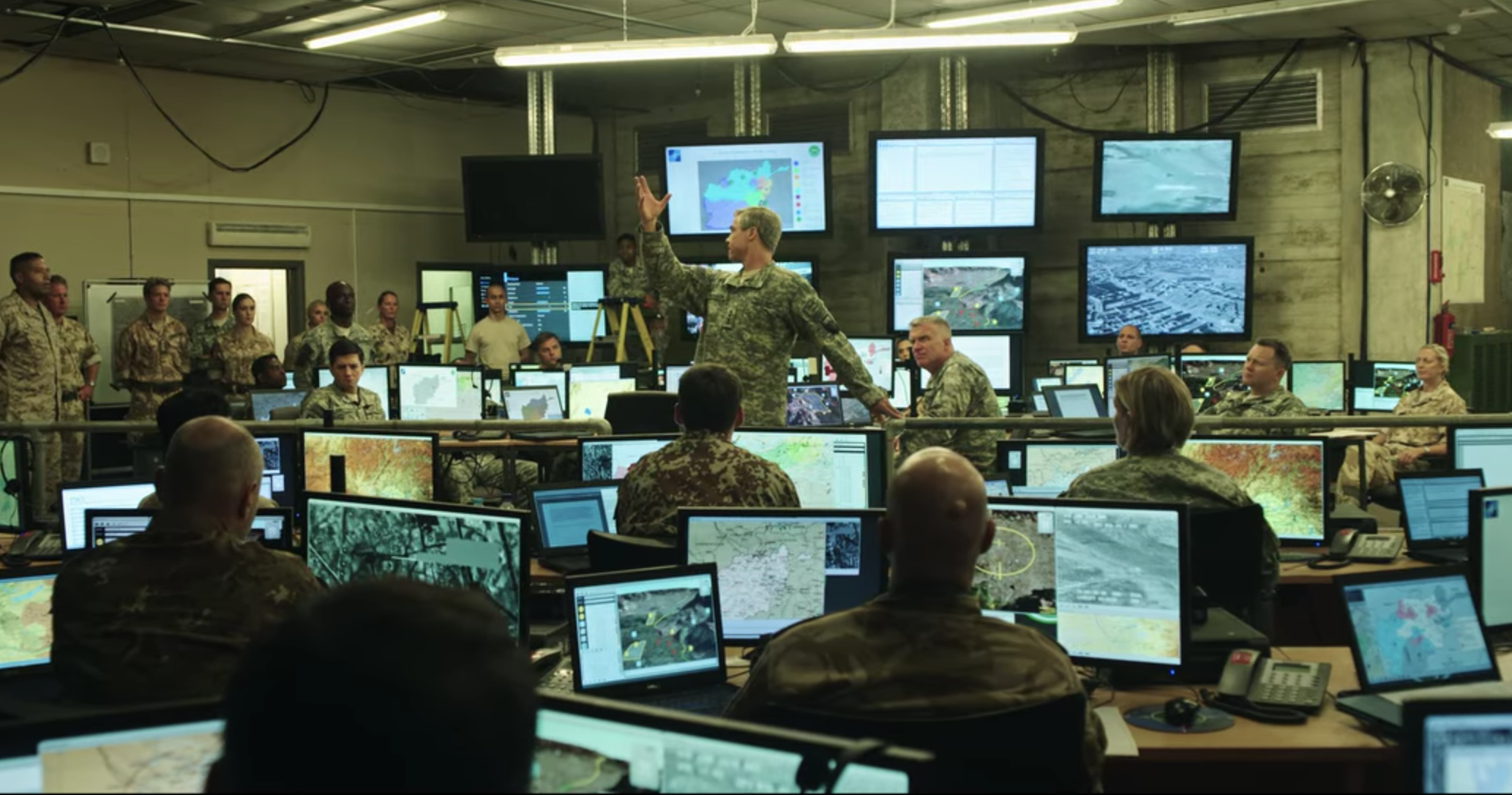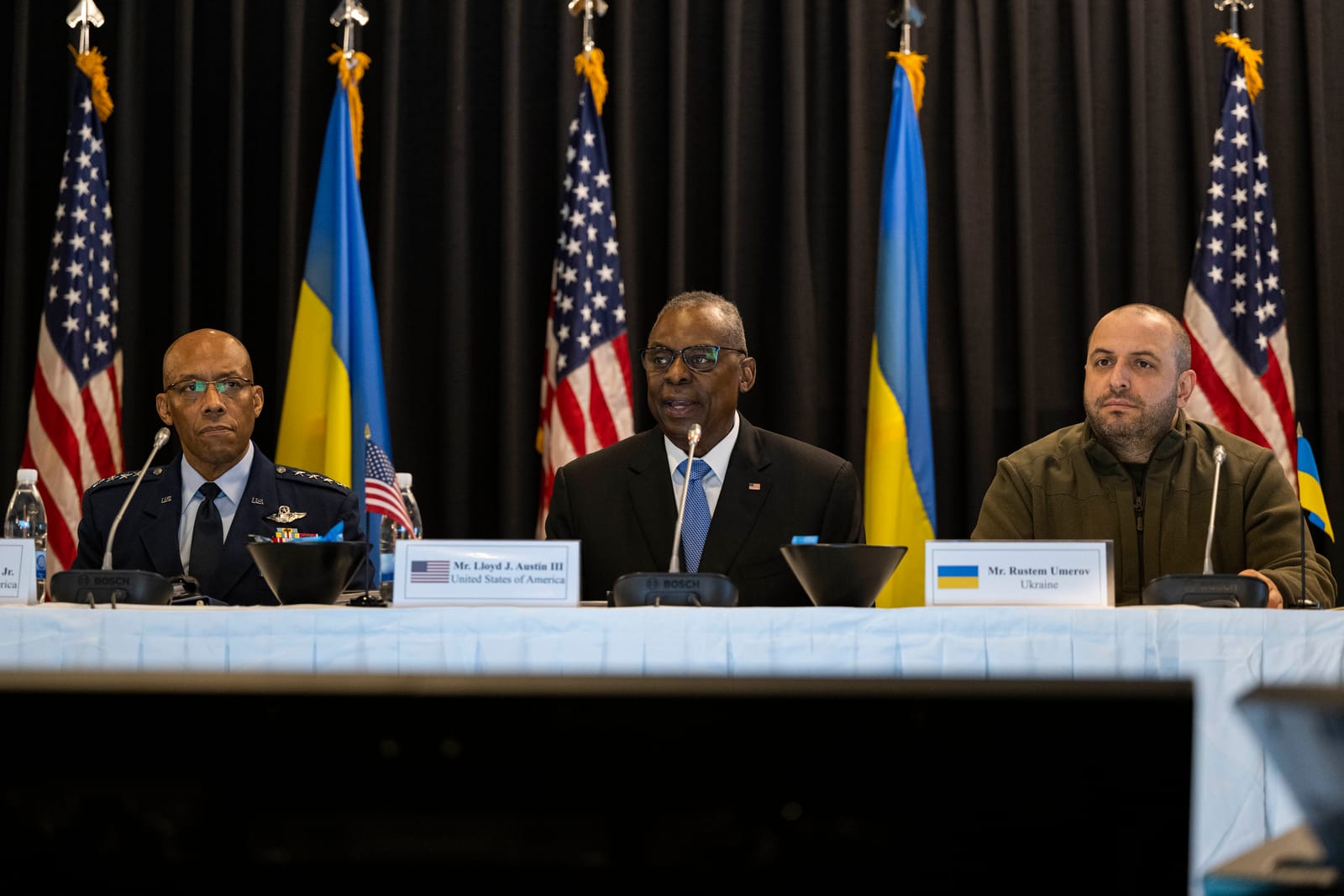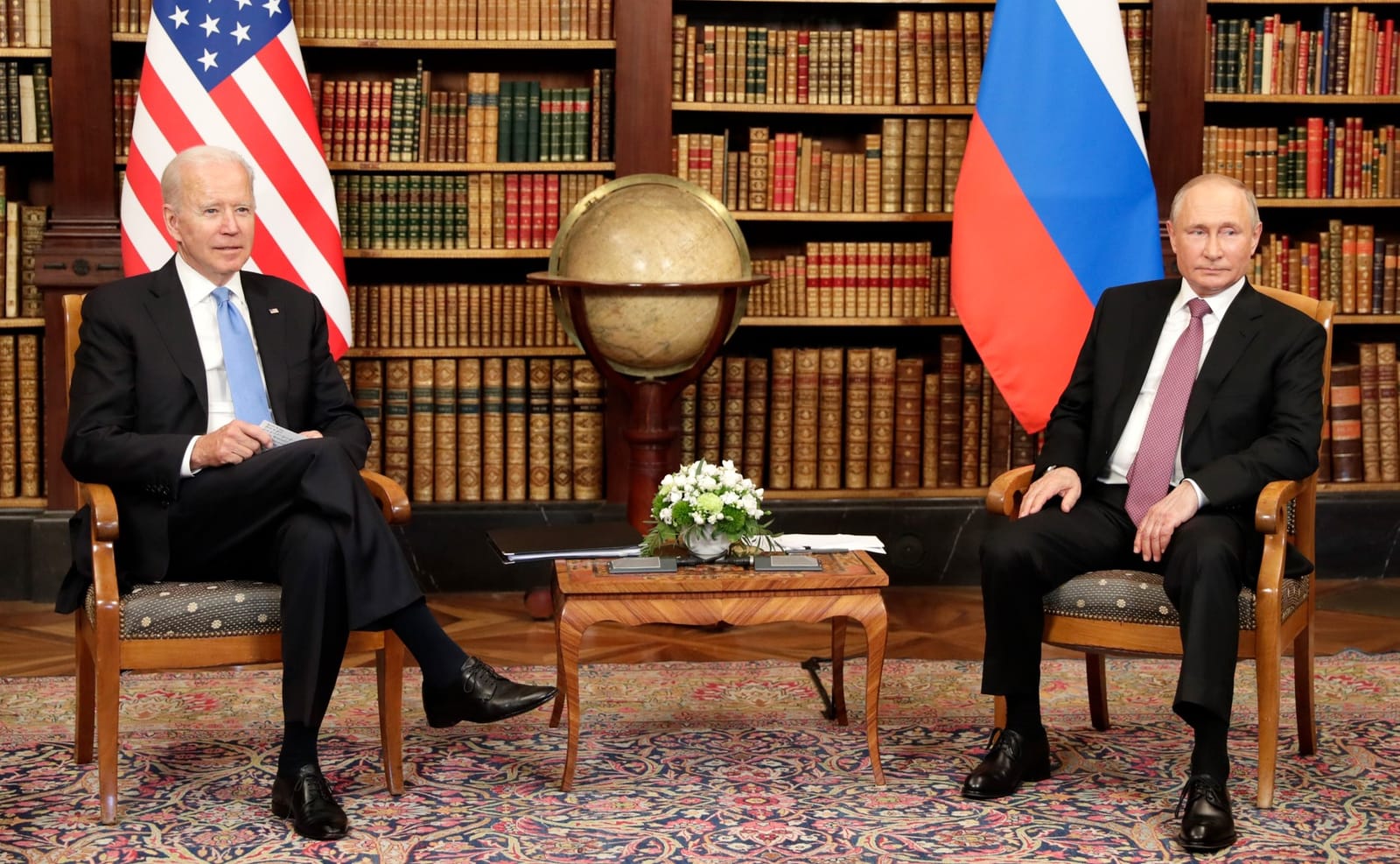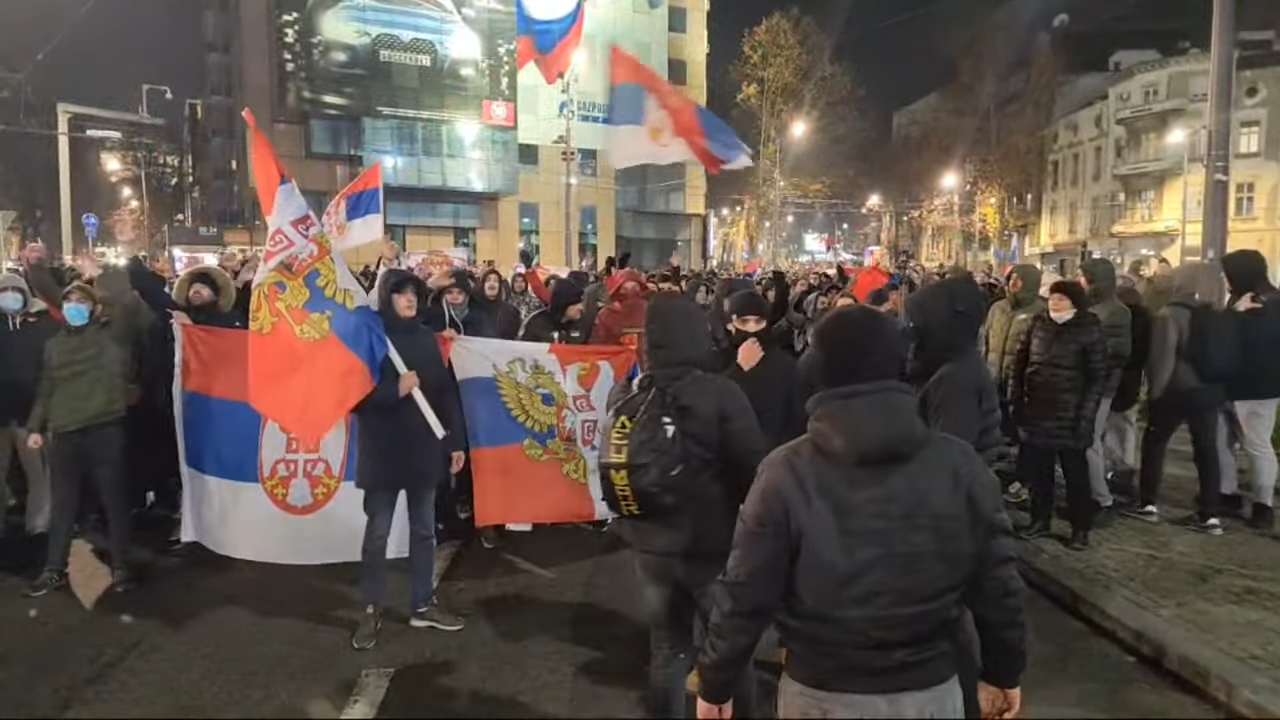Politically, economically through to technically/technologically, and beyond, we all have many competing and pressing demands on our time and activities. This commentary article contends that, today, military and defence to security communities more widely - and, in particular, extending to each of their underpinning intelligence components - all benefit from being increasingly concerned about the concept of ‘multi-everything!’.[1]
Both already here and further increasingly emergent, that last phenomenon of ‘multi-everything!’ can be better navigated with the improved and greater understanding of situational awareness-related considerations, such as that of ‘multiplexity’ (discussed in more depth below); as well as advancing an appreciation that, when combined - for instance, in a highly ‘joint’ manner - the two main ‘toolboxes’ of ‘System-of-Systems’ to ‘Team-of-Teams’ offer us some of the most advantageous operational- up and across to strategic-ranging ‘toolsets’ for dealing with contemporary ‘multiplexic’ circumstances, together with extending to their proximate concerns and prioritisation.[2]
Beginning with a brief overview of what constitutes ‘multiplexity’, answering the main analytical question of ‘what is it?’, to then further introducing the readily combinable or jointly deployable ‘toolboxes’ to ‘toolsets’ of, firstly, ‘System-of-Systems’ to, secondly, ‘Team-of-Teams’, extending to all of their closely associated respective and fused dynamics, finally this article presents some overarching conclusions. Those conclusions help answer the deeper assessment and estimation-related ‘what does it mean?’ queries as we look more to the future.
Forming a key takeaway, the overall conclusions also present the constantly developing concept of ‘Intelligence Engineering’ (‘IE' in short). IE is offered as, at least a proposed, ‘solution’ to the above experienced and encountered multiple challenges - that is however they might be precisely characterised in all of their rich detail both here, and, equally, continuing to advance into realms that extend further beyond, normatively as well as in terms of values and more visceral interests.
What is ‘multiplexity’?
The essence of ‘multiplexity’ is that it quickly and concisely articulates that ‘multiple complexities’ exist and are confronted - for example, including at the same time(s) and involving the same place(s) in today’s operating to strategic environments. Those are often also characterised as representing situations of globalised strategic risk.[3]
Elsewhere, particularly with regard to the Social Sciences discipline, ‘multiplexity’ has been defined in more substantive detail as a condition stemming from the ‘multiplex’ phenomenon. Beyond merely a more common cinema or movie theatre understanding of the word, that phenomenon in turn is evaluated as: ‘involving or consisting of many elements in a complex relationship … [also] involving simultaneous transmission of several messages along a single channel of communication.’[4] The idea of ‘fusion’ and similar activities, along with their nearby derivatives, similarly figure largely.
When considering ‘multiplexity’, for many different stakeholders, increasingly familiar ‘multi-domain' concepts consisting of both physical (sea, air, land, and space) and virtual (cyber/digital) domains are also very much present in-conjunction. That is additionally hand-in-glove with all of their closely associated all-source-related ‘multiple intelligences’ or ‘Multi-INTs’ for granting enhanced insight(s) both into and across all of those domains of military to defence and security, extending to policing/law enforcement authority, relevant activity and relating to what most concerns them.[5]Greater consideration of ‘multi-everything!’ is again not far behind.
More bluntly, how well or not ‘multiplexity’ is negotiated, even further harnessed via its management addressing, renders success more or less likely. For instance, that is especially noteworthy in terms of realising overarching strategic ends or most advantageous conditions of ‘mission accomplishment’. Again, that status is however those ‘ends’ might be defined most precisely.[6]Employable as ‘ways’ and ‘means’ for aiding both the navigation and addressing, discussed next are the ‘System-of-Systems’ to ‘Team-of-Teams’ toolboxes to toolsets. In parallel, that presentation is alongside communicating the value that they each individually, and, perhaps more importantly, collectively boast, as well as can bring to the overall proverbial table of enterprises and their realisation to progression.[7]
‘System-of-Systems’ + ‘Team-of-Teams’
Both in and with regard to the United States, as well as extending more widely internationally, the concept of ‘System-of-Systems’ or ‘Federation-of-Systems’ (SoS), has been much defined and examined in relation to the intelligence to military/defence and security, as well as the policing and law enforcement, sectors.[8]
They do well to continue to take close note. Drawing on the subject literature, a most immediately obvious citable example of ‘System-of-Systems’ being acknowledged in action - and, equally, forming an entrée into SoS thinking and to its applied use - in its analysis work the North Atlantic Treaty Organisation (NATO) harnesses the independent, yet simultaneously closely interconnecting and interacting to the point of becoming more interdependent, so-called ‘factors’ and ‘indicators’ of PMESII - relating to ‘Political’, ‘Military’, ‘Economic’, Social’, ‘Informational/Intelligence’ and ‘Infrastructural’ systems.[9]
Beyond merely the SoS units of analysis, dating from around 2015 retired US Army General Stanley McCrystal and his colleagues developed the ‘Team-of-Teams’ (ToT) concept. ToT adopts a similar methodology in its approach to that observed with SoS, including with a high ecosystem(s) focus. Again, key to note here when summarising is that a ‘the-whole-is-greater-than-the-sum-of-individual-parts’ rationale both features and figures largely at the heart of ToT. That approach - in this case, for example, in relation to team-building and their subsequent working, both on individual bases and collectively together - equally offers greater explanatory potential as to how activities or course(s) of action (CoA) can be better engaged with and realised in their improved forging to subsequent fashioning and addressing, such as with regard to those ‘multiplexic’ concerns introduced above.[10]
Ultimately driving the ToT philosophy outlined here, and as noted elsewhere during August 2021 from the US military and cyber context, is that: ‘Teamwork will make the difference, [Lt. Gen. Stephen Fogarty, USA, commander, U.S. Army Cyber Command] indicated. “This is a team working with industry, with academia, with our partners. That’s going to be key to shortening … [the] time window,” the commander offered. “We’re not just bringing one of the tribes to the party. We’re bringing them all. That’s absolutely the requirement for this [US information-related work] at the end of the day. Not one of the tribes can do this by themselves.”’[11]
By way of another demonstrable example, that last point about different teams and their empowering interaction is recognised as being particularly acute in, for instance, Special (Operations) Forces (SF/SOF) work, where resources (staff and matériel) inevitably remain finite. That prevailing condition is in part due to SF/SOF’s well-known ‘elite’ to ‘special’ status, and due to SF/SOF possessing naturally smaller size/scale ‘footprints’ (especially when compared to the deployment of much larger numbers of ‘conventional’ forces).[12]
‘Intelligence Engineering’ as a solution
Much can be learnt for further ready communication. Once both ‘System-of-Systems’ and ‘Team-of-Teams’ concepts, as introduced above, are combined in both, firstly, ‘context appreciation’, and then, secondly, ‘solution-fashioning’ roles, then much more ‘Intelligence Engineering’ (IE) is witnessed.[13] Spanning and combining both military headquarters department-related G/J2 Intelligence + G/J3 Operations/Training activities, IE is defined, in short, as: 'the use of scientific and technical knowledge to artfully create, operate, maintain, and dismantle complex devices, machines, structures, systems, and processes that support or disrupt human endeavor occurring in the intelligence context’.[14]
Inevitably, that last lengthy list of combined-to-joint activities has substantial utility when engaging both in and with ‘multiplexity’ and its associated ‘multiplexic environments’. Additionally, IE’s assistance is clear when contending both operationally up and across to strategically with the ‘multi-everything!’ demands of contemporary challenges that, in turn, are confronted all at once and both in and at considerably varying tempos by anyone ranging from individuals to differently-scaled groups.[15]
Unless similarly heading versions of these more ‘visionary’ and ‘holistic’ or comprehensive-encompassing IE-type approaches are adopted towards, for example, overall globalised strategic risk assessment and subsequent management activities, the full-spectrum range of issues-problems-hazards-risks up and across to threats, extending to the loss of command-and-control (C2) to greater conditions of ‘unravelling’ will occur unabated. Detrimental encounters can be avoided and mitigated against. Not only manifest or articulated in the form of - or, indeed, via - ‘rules of engagement’ (RoE), substantial multiplexity management value stems from suitably structured boundaries being set overall. Intelligence Engineering provides an expeditious blueprint.
Foto: Illustrasjon (War Machine / Netflix)
[1] The ‘multi-everything!’ concept is introduced in A.D.M. Svendsen, 'Intelligence, Surveillance and Reconnaissance (ISR)’, chapter 22 in J. Deni and D. Galbreath (eds), Routledge Handbook of Defence Studies (London: Routledge, 2018) - via: < https://www.routledgehandbooks.com/doi/10.4324/9781315650463-23 > (accessed: August 2021); for a similar line of thinking, see also Mark Galeotti's forthcoming book (due c.January 2022), The Weaponisation of Everything: A Field Guide to the New Way of War(USA: Yale University Press) - via: < https://yalebooks.co.uk/display.asp?k=9780300253443 > (accessed: August 2021).
[2] For some further introductory insights into these concepts, together with how they can be deployed in the context of a mini-case study focused on ‘hybrid defence’, see A.D.M. Svendsen, 'Getting Somewhere? The Utility of "Multiplexic Thinking" in Connecting International Relations to the Study and Doing of Intelligence', Journal of European and American Intelligence Studies (JEAIS), 1, 1 (2018) - abstract/summary via: < http://www.rieas.gr/images/page/AdamSvendsenPreview.pdf > (accessed: August 2021).
[3] See as discussed in further depth, for example in relation to the current threat of Islamic State or Daesh, in the textbook: A.D.M. Svendsen, Intelligence Engineering: Operating Beyond the Conventional (New York: Rowman & Littlefield/Security and Professional Intelligence Education Series - SPIES, 2017) - via: < https://rowman.com/ISBN/9781442276642/Intelligence-Engineering-Operating-Beyond-the-Conventional > (accessed: August 2021); see also A.D.M. Svendsen, ‘Developing international intelligence liaison against Islamic State: Approaching “one for all and all for one”?’, International Journal of Intelligence and CounterIntelligence, 29, 2 (2016), pp.260-277 - available via: < www.tandfonline.com/doi/full/10.1080/08850607.2016.1121042 > (accessed: August 2021).
[4] Quoted in Svendsen, 'Getting Somewhere?’, p.71.
[5] A.D.M. Svendsen with Salem B.S. Dandan, 'Doing Intelligence Differently via "Intelligence Engineering" (IE)', Small Wars Journal (18 April 2020) - via: < https://smallwarsjournal.com/jrnl/art/doing-intelligence-differently-intelligence-engineering-ie > (accessed: August 2021).
[6] See, for instance, as indicated in A.D.M. Svendsen, ‘Strategic Futures and Intelligence: The Head and Heart of “Hybrid Defence” Providing Tangible Meaning and Ways Forward’, Small Wars Journal (1 June 2017) - available via: < http://smallwarsjournal.com/jrnl/art/strategic-futures-and-intelligence-the-head-and-heart-of-%E2%80%98hybrid-defence%E2%80%99-providing-tangibl > (accessed: August 2021).
[7] See also A.D.M. Svendsen, ‘Collective Intelligence (COLINT)’ entry in G. Moore (ed.), Encyclopedia of U.S. Intelligence (EUSI) (New York: Taylor & Francis/CRC Press, 2014) - details via: <https://www.taylorfrancis.com/books/9781420089585/chapters/10.1081/E-EUSI-120049757>.
[8] For some of this work, see, for example, as outlined in detail: A.D.M. Svendsen, ‘Advancing “Defence-in-depth”: Intelligence and Systems Dynamics’, Defense & Security Analysis, 31, 1 (2015), pp.58-73 - available via: <www.tandfonline.com/doi/full/10.1080/14751798.2014.995337>; and via: A.D.M. Svendsen, ‘Contemporary intelligence innovation in practice: Enhancing “macro” to “micro” systems thinking via “System of Systems” dynamics’, Defence Studies, 15, 2 (2015), pp.105-123 - available via: <www.tandfonline.com/doi/full/10.1080/14702436.2015.1033850>.
[9] See, for example, as referenced alongside other approaches in I.G. Grongstad and K.L. Lasoen, 'The Nature of Intelligence Requirements, Internal Roles and Relations in the Twenty-First Century', Chapter 2 in T. Røseth and J. Weaver (eds), Intelligence Relations in the 21st Century (Basingstoke: Palgrave Macmillan, 2020), p.73 - via: <https://doi.org/10.1007/978-3-030-34004-9_2>
[10] US Gen. S. McChrystal, et al., Team of Teams: New Rules of Engagement for a Complex World (London: Portfolio, 2015).
[11] G.I. Seffers, 'U.S. Military on Discovery Voyage in Information Realm', SIGNAL Magazine (18 August 2021) - via: < https://www.afcea.org/content/us-military-discovery-voyage-information-realm > (accessed: August 2021).
[12] See, e.g. A.D.M. Svendsen, ‘Sharpening SOF tools, their strategic use and direction: Optimising the command of special operations amid wider contemporary defence transformation and military cuts’, Defence Studies, 14, 3 (2014), pp.284-309 <http://www.tandfonline.com/doi/full/10.1080/14702436.2014.890341>; see also G. Eriksson and U. Pettersson (eds), Special Operations from a Small State Perspective: Future Security Challenges (Basingstoke: Palgrave Macmillan, 2017) - via: <https://www.palgrave.com/gp/book/9783319439600>; A. Finlan, 'A dangerous pathway? Toward a theory of special forces', Comparative Strategy, 38, 4 (2019), pp.255-275 - via: <https://www.tandfonline.com/doi/full/10.1080/01495933.2019.1633181>.
[13] A.D.M. Svendsen, 'Doing "Intelligence Engineering" (IE)', LinkedIn Article (20 February 2020) - <https://www.linkedin.com/pulse/doing-intelligence-engineering-ie-adam-svendsen?articleId=6636333422551932928>.
[14] A.D.M. Svendsen with Salem B.S. Dandan, 'The "Intelligence Engineering" (IE) Rationale', RealClearDefense(Washington, DC: 10 April 2020) - via: <https://www.realcleardefense.com/articles/2020/04/10/the_intelligence_engineering_ie_rationale_115190.html>.
[15] A.D.M. Svendsen with Salem B.S. Dandan, 'Intelligence Engineering: The Spymaster's Guide To the 21st Century’, The National Interest blog (USA: 12 April 2020) - via: <https://nationalinterest.org/blog/buzz/intelligence-engineering-spymasters-guide-21st-century-143522>.







